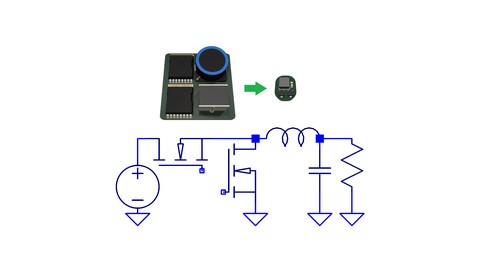Ltspice: Design A 99% Efficient Buck Converter

Ltspice: Design A 99% Efficient Buck Converter
Published 4/2024
MP4 | Video: h264, 1920x1080 | Audio: AAC, 44.1 KHz
Language: English
| Size: 396.78 MB[/center]
| Duration: 0h 33m
Learn how to maximize the efficiency of a buck converter design.
What you'll learn
You will be able to understand what are the critical steps to design a 99% efficient buck converter.
This course is hands-on! All the examples will be designed in LTspice itself instead of using presentation slides
You will understand how to use real components from actual manufacturers instead of having to rely on ideal component models.
You will master several aspects of the LTspice interface, toolbars and commands.
You will learn how to measure power dissipation and efficiency of components.
You will learn about parasitic capacitances of MOSFETs, diodes and inductors and how they influence the efficiency of a buck converter.
Requirements
You are already able to use LTspice, but would like to understand how to use real component models rather than using ideal components.
You already know what a buck converter is, but struggle or wonder how to increase its efficiency.
I use a lot of keyboard shortcuts, if you learn on how to use them too, you can increase your speed when working with LTspice
Description
This course introduces you to the steps that are required to increase the efficiency of a buck converter.When using real component models in LTspice, you have to consider many factors during your component selection.This course will help you to find out which effects are the main causes for degradation of a buck convers efficiency, following terms will be directly or indirectly covered during this course:Diode: * Forward Voltage * Current Capability * Breakdown Voltage * Reverse Current * Junction CapacitanceMOSFET: * On Resistance * Gate Capacitance and Gate Charge as well as other capacitances that influence the switching behaviour * Gate Risetime and Gate Falltime * Switching Frequency * Dead Time * Current Conduction via Body Diode * Gate Driving Requirements * Safe Operating Area (SOA) * Shoot-Through Current (Current that flows when High-Side and Low-Side MOSFET are on at the same time)Capacitor: * Series Resistance * Series Inductance * Parallel ResistanceInductor: * Series Resistance * Series Capacitance * Parallel CapacitanceFollowing topics are not being discussed in this course, but are still important for a real world design:Diode: * Temperature dependence of Forward Voltage and Current * Temperature dependence of Reverse Current * Temperature dependence of Junction Capacitance * Surge Current capability over TemperatureMOSFET: * Temperature dependence of all above mentioned topics * Variation of Dead time of the Gate Driver (Jitter) * dV/dt rugedness of MOSFET (maximum change rate VDS voltage) * Maximum allowed Power Dissipation over Temperature * Current Capability of Body DiodeCapacitor: * Frequency and Temperature dependence of Capacitance * Temperature dependent allowable Maximum Power Dissipation * Ripple Current Capability over Temperature * Aging Effects due to Temperature and ripple current * Acoustic noise Emission limits (MLCC piezoelectric effect)Electromagnetic Compatibility: * Emission Limits * Immunity RequirementsRegulatory Requirements: * CE, FCC, . * Hazardous Area Requirements * Laws limiting import and export of Hazardous Substances (e.g. RoHS)
Overview
Section 1: Introduction
Lecture 1 Introduction
Section 2: Design of a simple buck converter design
Lecture 2 Creation of the initial schematic
Lecture 3 Replace the ideal components with real components
Lecture 4 Measure the circuits efficiency
Lecture 5 Identify the components that cause the most powerlosses
Section 3: MOSFET freewheeling
Lecture 6 Improve efficiency by using a MOSFET instead of a Diode
Lecture 7 Adjust the dead time of the MOSFET and reach 99% efficiency
Section 4: High Frequency Buck Converter Design
Lecture 8 Design of a High Frequency Buck converter
Lecture 9 Transistor Selection Strategy
Lecture 10 Gate Voltage
Lecture 11 Inductor Selection for high Frequencies
Lecture 12 Safe Operating Area
Section 5: Import MOSFET SPICE Models into LTspice
Lecture 13 Introduction and how to import type 1 data packages
Lecture 14 Type 2 data packages (only lib file available, but no symbol file)
Lecture 15 Type 3 data packages (auto generated symbols dont show pin names)
Lecture 16 Type 4 data packages (encrypted lib file)
Lecture 17 Type 5 data packages (only datasheet and or excel tables available)
Lecture 18 Type 6 data packages (provided files have easy to fix errors)
Lecture 19 Type 7 data packages (no detailed data available)
Section 6: Summary and conclusion
Lecture 20 Summary and conclusion
This course is best for people that are already knowledgeable about LTspice but want to level up their design skills.,This is not a beginners course as many keyboard shortcuts are used which can intimidate beginners.

Free search engine download: LTspice Design a 99% efficient Buck Converter
